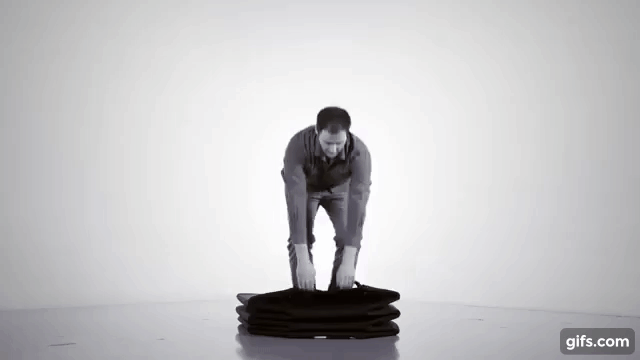Sting
Ninety-one minutes, including seven for closing credits, isn’t enough for “Sting,” a modestly scaled horror caper that pits a flesh-eating spider against a handful of Brooklynites. A little more would likely have gone a long way, given how rushed and underdeveloped many characters and animal attack scenes are in this polished genre exercise. Granted, a B-movie like this can only stand so much puffing up, but an extra 15-20 minutes probably wouldn’t have hurt this Spielberg-y creature feature, which boasts creature effects by Wētā Workshop (the “Lord of the Rings” trilogy). The makers of “Sting,” led by writer/director Kiah Roache-Turner (“Wyrmwood: Road of the Dead”), have obviously seen a lot of genre movies, but that cinephilia doesn’t translate into good cheap thrills or crowd-pleasing adventure drama. Like a lot of post-Amblin entertainments, “Sting” focuses on a nuclear family’s strained relationship whenever it’s not a by-the-numbers When Animals Attack pic. Ethan (Ryan Corr) is a typical post-Spielberg dad: His fatal flaw is that he, uh, wears too many hats. He’s the super for a Brooklyn apartment run by the cheap and questionably accented slum-lady Gunter (Robyn Nevin). Ethan’s also a comic book artist with a rising career. For his comics, Ethan takes inspiration from angsty pre-teen Charlotte (Alyla Brown), the daughter of Heather (Penelope Mitchell), Ethan’s exasperated partner. Ethan cares but is still insecure in his dual roles as provider and working stiff. Typically manageable problems add up fast, especially a mysterious pest issue in Gunter’s building, as well as a growing rift between Ethan and Charlotte. No adults can help relieve Ethan’s burden, not even Frank (Jermaine Fowler), an aggrieved, wisecracking exterminator. Enter Charlotte, the most sympathetic character in “Sting,” possibly because she’s the one who’s most defined by dramatic/situational peril. You don’t have to like Charlotte to care about scenes where she first raises and then chases after Sting, a pet spider who crash-lands to Earth in a ping-pong-ball-sized asteroid. Sting gets bigger over the course of the movie, but he never really adds much to “Sting” beyond a generic threat. Charlotte could have been enamored with and then disgusted by an irradiated field mouse or a man-eating toilet ‘gator. The fact that Sting’s a spider doesn’t really mean anything, which is strange given how much time Charlotte and the others spend getting around Gunter’s building using an elaborate network of air vent tunnels. You might think that a story about an overtaxed dad and an underappreciated daughter might have more to say about spiderwebs and family life. You’d be wrong, in this case. “Sting” doesn’t have much to say about Charlotte and Ethan’s relationship beyond the conventional drive towards reconciliation. Wētā makes Charlotte’s spider look about as good as a giant black widow can, but even the creature’s design feels like a missed opportunity here. It’s just a black spider with a small red vertical dash down its back? Really? I mean, a well-rendered but generic threat isn’t exactly monster movie Kryptonite. It’s still only so interesting when the characters are also stock types, and the monster-centric scenes are too short and not even well-paced enough to be either suspenseful or gross. The spider webs, bodily fluids, and gore effects mostly land anyway because they don’t need much set-up or development. But everything that requires the Spielberg touch feels light and indistinct. Even the schtickiest elements of the movie feel sketchy. Like, why isn’t there more or better material for Gunter’s forgetful sister Helga (Noni Hazelhurst), the first character in the movie to spot Charlotte’s pet? Ditto for Frank, a beleaguered side character played by a diligent performer. These characters are clearly meant to be likable, but too many scenes—and one-liners and plot points—feel careless when they should be built up to with Spielberg-ian rigor. Otherwise, why wouldn’t audience members think of other, better monster movies? Copying Spielberg and his successors isn’t an automatic demerit, but you also have to be patient enough to have studied their technique. “Sting” often feels like a movie made by enthusiastic but careless fans. The laugh lines—"Why didn't you get a ****ing dog?!"—aren't mounted with enough comic buildup or suspense. And the action scenes usually start and stop without enough grace or energy to feel momentous. During a representatively busy but unconvincing chase, Eric wheezes as he climbs up a vertical air vent. You can imagine why Dad’s out of breath, but there’s insufficient proof of his efforts on screen. We’re not given enough time to either luxuriate in dread or develop feelings for Eric and his family, making the fast scenes too slow and the slower scenes too quick. “Sting” has a lot of the right ideas but not enough inspiration to string them all together.


Ninety-one minutes, including seven for closing credits, isn’t enough for “Sting,” a modestly scaled horror caper that pits a flesh-eating spider against a handful of Brooklynites. A little more would likely have gone a long way, given how rushed and underdeveloped many characters and animal attack scenes are in this polished genre exercise. Granted, a B-movie like this can only stand so much puffing up, but an extra 15-20 minutes probably wouldn’t have hurt this Spielberg-y creature feature, which boasts creature effects by Wētā Workshop (the “Lord of the Rings” trilogy). The makers of “Sting,” led by writer/director Kiah Roache-Turner (“Wyrmwood: Road of the Dead”), have obviously seen a lot of genre movies, but that cinephilia doesn’t translate into good cheap thrills or crowd-pleasing adventure drama.
Like a lot of post-Amblin entertainments, “Sting” focuses on a nuclear family’s strained relationship whenever it’s not a by-the-numbers When Animals Attack pic. Ethan (Ryan Corr) is a typical post-Spielberg dad: His fatal flaw is that he, uh, wears too many hats. He’s the super for a Brooklyn apartment run by the cheap and questionably accented slum-lady Gunter (Robyn Nevin). Ethan’s also a comic book artist with a rising career.
For his comics, Ethan takes inspiration from angsty pre-teen Charlotte (Alyla Brown), the daughter of Heather (Penelope Mitchell), Ethan’s exasperated partner. Ethan cares but is still insecure in his dual roles as provider and working stiff. Typically manageable problems add up fast, especially a mysterious pest issue in Gunter’s building, as well as a growing rift between Ethan and Charlotte. No adults can help relieve Ethan’s burden, not even Frank (Jermaine Fowler), an aggrieved, wisecracking exterminator. Enter Charlotte, the most sympathetic character in “Sting,” possibly because she’s the one who’s most defined by dramatic/situational peril.
You don’t have to like Charlotte to care about scenes where she first raises and then chases after Sting, a pet spider who crash-lands to Earth in a ping-pong-ball-sized asteroid. Sting gets bigger over the course of the movie, but he never really adds much to “Sting” beyond a generic threat. Charlotte could have been enamored with and then disgusted by an irradiated field mouse or a man-eating toilet ‘gator. The fact that Sting’s a spider doesn’t really mean anything, which is strange given how much time Charlotte and the others spend getting around Gunter’s building using an elaborate network of air vent tunnels. You might think that a story about an overtaxed dad and an underappreciated daughter might have more to say about spiderwebs and family life. You’d be wrong, in this case.
“Sting” doesn’t have much to say about Charlotte and Ethan’s relationship beyond the conventional drive towards reconciliation. Wētā makes Charlotte’s spider look about as good as a giant black widow can, but even the creature’s design feels like a missed opportunity here. It’s just a black spider with a small red vertical dash down its back? Really? I mean, a well-rendered but generic threat isn’t exactly monster movie Kryptonite. It’s still only so interesting when the characters are also stock types, and the monster-centric scenes are too short and not even well-paced enough to be either suspenseful or gross.
The spider webs, bodily fluids, and gore effects mostly land anyway because they don’t need much set-up or development. But everything that requires the Spielberg touch feels light and indistinct. Even the schtickiest elements of the movie feel sketchy. Like, why isn’t there more or better material for Gunter’s forgetful sister Helga (Noni Hazelhurst), the first character in the movie to spot Charlotte’s pet? Ditto for Frank, a beleaguered side character played by a diligent performer. These characters are clearly meant to be likable, but too many scenes—and one-liners and plot points—feel careless when they should be built up to with Spielberg-ian rigor. Otherwise, why wouldn’t audience members think of other, better monster movies?
Copying Spielberg and his successors isn’t an automatic demerit, but you also have to be patient enough to have studied their technique. “Sting” often feels like a movie made by enthusiastic but careless fans. The laugh lines—"Why didn't you get a ****ing dog?!"—aren't mounted with enough comic buildup or suspense. And the action scenes usually start and stop without enough grace or energy to feel momentous.
During a representatively busy but unconvincing chase, Eric wheezes as he climbs up a vertical air vent. You can imagine why Dad’s out of breath, but there’s insufficient proof of his efforts on screen. We’re not given enough time to either luxuriate in dread or develop feelings for Eric and his family, making the fast scenes too slow and the slower scenes too quick. “Sting” has a lot of the right ideas but not enough inspiration to string them all together.
















:quality(85):upscale()/2024/03/18/856/n/1922283/tmp_ZRWhy9_a4df95a36d0af8ec_Cristina_Escobar_TEDx_IMAGE.Headshot.png)



